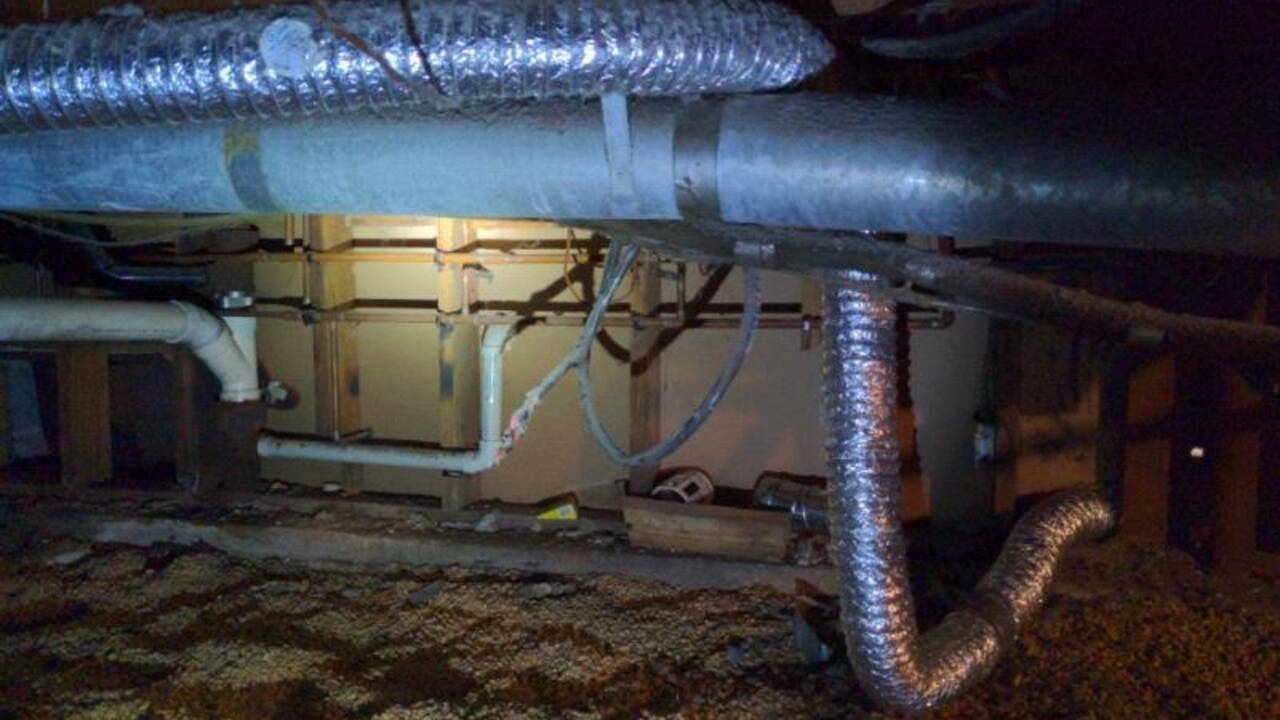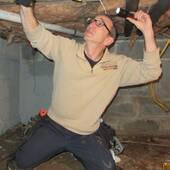One of the important things that a NJ home inspector can look for is a properly installed dryer vent pipe. I can't speak for other home inspectors, but I really try to inspect the dryer vent. The dryer vent pipe is a crucial part of a safe clothes dryer system. Yes, at times the dryer vent pipe can be challenging to inspect and also can be challenging to determine its discharge point however, its type, length, and location can be a safety issue and should be inspected carefully.
The reason that dryers are vented out is to release moisture and hot air to the exterior of the home. Another important reason why dryers have to be vented to the outside properly is that a gas dryer will emit carbon monoxide as combustion takes place. Carbon monoxide is a deadly odorless, colorless gas that is not easy detectable. Exposure to the gas can cause confusion, headache, weakness, dizziness and are often described as flu like symptoms. Carbon monoxide poisoning can develop when the gas builds up in the bloodstream. The human body replaces the oxygen inside red blood cells with carbon monoxide. If exposure is long enough death can occur.
Dryer vent fires are much more common than most people think. According to the National Fire Protection Association there are over 13,000 dryer fires in the US yearly causing $233 million in damage and at least seven deaths each year. Failure to properly maintain the dryer vent is the leading cause of household dryer fires in the US. It is imperative that a dryer vent pipe be properly installed.
Dryer vent ducts should be a rigid metal and be at least .016 inches thick. The ducts should be smooth and not ribbed because the ribs can trap lint inside the duct. All joints in the duct work should be installed in the direction of the airflow. There should be no fasteners that extend into the duct work. Screws which are found often can collect and trap lint inside the duct. The flexible duct that is often used should be identified by the NJ Home Inspector and the client urged to upgrade the vent duct.
The maximum length of a clothes dryer duct should not exceed 35 feet. The 35 feet is measured from the connection point of the dryer to the duct discharge point outside the home. The interesting thig here is that the dryer vent duct distance allowed is reduced by 2-1/2 feet for every 45- degree bend and reduced 5 feet for every 90-degree elbow or bend that exists in the ductwork.
Dryer vents should discharge to the exterior and never to an interior space and never to the attic. These types of terminations can create a lot of moisture damage and create conditions that are conducive to mold growth. The vent discharge should be at least three feet from any opening into the home such as a window or door and be at least one foot off the ground. The termination should have a means to prevent backdraft such as a louvered damper. Screen terminations are prohibited because they can trap lint and create fire hazards.
Dryer vent ducts should be supported properly at least every 12 feet and properly secured in place. The narrow end of the dryer duct should connect to the next section in the direction of air flow. This will help prevent lint build up at the seams. When two sections of dryer duct come together a proper connector must be used, and the seams should be sealed. The seams should be substantially airtight by using tapes, mastics, gaskets, and other approved sealing systems. Screws or other fasteners that enter the duct should not be used because they can catch lint and obstruct airflow.
dryer vent pies should be cleaned two times per year to make sure they keep discharging efficiency and to avoid lint build up with is a significant fire hazard. Homeowners can do this cleaning maintenance themselves or they can hire a duct cleaning company to perform the work. Failure to perform routine dryer vent cleaning will raise utility bills because clothes will not dry as fast. Also, dryer lint is very flammable, and an obstructed duct can allow heat to build up and create the conditions necessary for the lint to catch fire. Lint can also be ignited by a faulty burner or ignitor in the dryer. The best action plan to keep fire free is to properly maintain and clean the dryer ducting.
PVC pipe should not be used as a dryer vent duct. The PVC will have static electricity which will attract lint to the sides of the PVC reducing the diameter of the four-inch PVC pipe dramatically. PVC also takes longer to heat then metal duct which will allow water vapor to build up inside the duct also attracting lint. Wet or moist lint hardens and is more difficult to remove thus causing a greater probability of fire.
Flexible plastic dryer vent tubing should not be used. This plastic tubing restricts air flow. Over time the ridges in the flex pipe accumulate lint creating greater fire risks. Also, if the dryer were to overheat caused by a problem with the high temperature limit switch the plastic pipes could combust due to excessive temperatures.
Dryer venting is often improperly installed and problematic. New Jersey home inspectors should thoroughly inspect and report on dryer vent deficiencies and explain best practices so their clients will have the knowledge to keep their homes safe from dryer fires.
John Martino
NJ Home Inspectors Lic # 24GI00058700
5 Preston Ave
East Hanover, NJ 07936
973 407 9621



Comments(5)